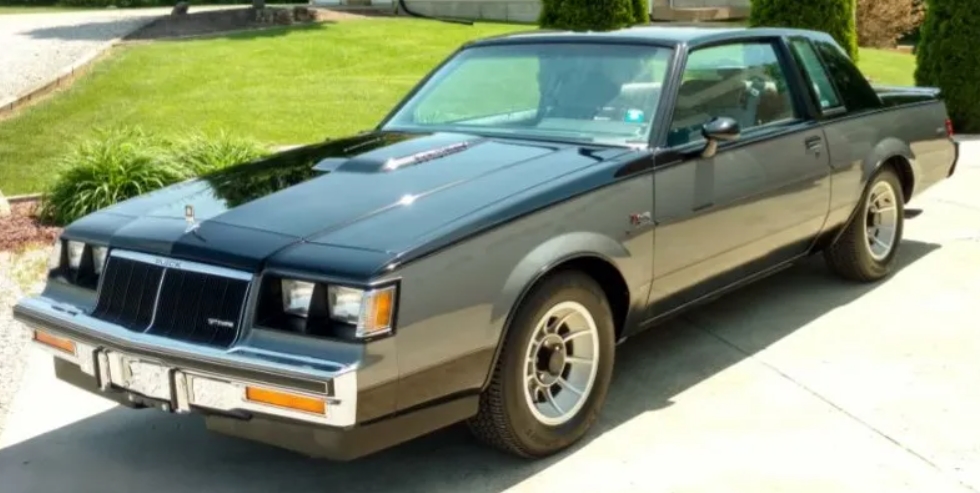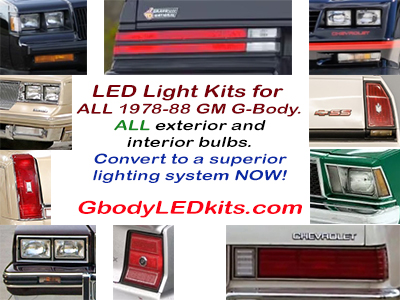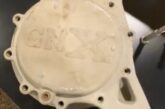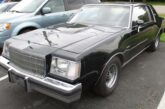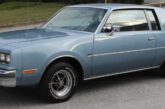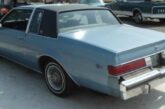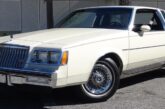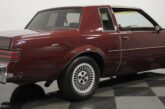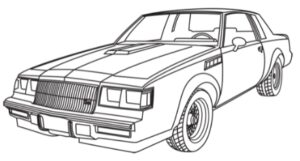1986 Buick Regal, 1986 Buick Regal Limited, 1986 Buick Regal T-Type, 1986 Buick Regal T-Type WH1, 1986 Buick Grand National.
In the mid-1980s, the American automotive landscape was a sea of front-wheel-drive sedans and emissions-choked V8s, the lingering hangover from the Malaise Era. Yet, from this unlikely epoch, an icon emerged from the most unexpected of places: Buick. Known for its comfortable, quiet, and decidedly adult-oriented vehicles, Buick created a performance legend with its rear-wheel-drive G-body platform. The year 1986 stands as a pivotal moment, a high watermark for this platform where one model name—Regal—represented four distinct automotive personalities. From the everyday commuter to a tire-shredding monster, the 1986 Buick Regal, Regal Limited, Regal T-Type, and the legendary Grand National offered something for everyone, provided you understood the subtle but crucial differences.
The Foundation: The 1986 Buick Regal (Custom)
Serving as the bedrock of the lineup was the standard Buick Regal, often referred to by its base trim level, the “Custom.” This was Buick’s bread-and-butter two-door coupe, designed to appeal to the brand’s traditional clientele who valued comfort, reliability, and conservative styling.
Specifications and Performance: The standard powertrain for the 1986 Regal was a 3.8-liter (231 cubic inch) naturally aspirated V6 engine, producing a modest 110 horsepower and 190 lb-ft of torque. It was mated to a three-speed or optional four-speed automatic transmission. For those who still craved V8 sound and torque, an optional 5.0-liter (307 cubic inch) V8 sourced from Oldsmobile was available, generating 140 horsepower and 255 lb-ft of torque. Performance was leisurely at best, prioritizing a smooth, quiet ride over any semblance of speed. The suspension was soft, designed to soak up road imperfections rather than carve corners.
Appearance and Options: Visually, the base Regal was a product of its time. It featured prominent chrome bumpers, a formal waterfall grille, and standard hubcaps, with optional wire wheel covers being a very popular choice. Many were adorned with vinyl landau roofs, opera windows, and a palette of relatively subdued colors. The interior was built for comfort, typically featuring a wide bench seat upholstered in cloth or vinyl, a column-mounted shifter, and a sweeping, simple dashboard. Options were focused on luxury and convenience, including power windows, power locks, air conditioning, cruise control, and various AM/FM cassette stereo systems.
Production Numbers: As the volume model, the base Regal and its luxury-oriented sibling, the Limited, accounted for the vast majority of production. For 1986, a total of 85,346 Regal coupes were produced, with most falling into the standard Custom and Limited categories. This was the car you saw in grocery store parking lots and cruising down the highway on a Sunday drive.
The Touch of Class: The 1986 Buick Regal Limited
Building directly upon the Regal Custom, the Regal Limited was the luxury-focused trim level. It shared the exact same mechanical underpinnings as the base model but elevated the experience through enhanced features and more opulent appointments. The difference between a Regal and a Regal Limited was not one of performance, but of prestige and comfort.
Specifications and Performance: The engine and transmission choices were identical to the base Regal: the standard 3.8L V6 or the optional 5.0L V8. There were no performance-enhancing upgrades associated with the Limited package. The goal was to provide the quietest, most isolated ride possible on the G-body platform.
Appearance and Options: The Limited distinguished itself with exterior and interior finery. It often featured more extensive chrome trim, specific “Limited” badging, and standard wire wheel covers. Inside, the Limited truly shone. The standard seating was a plush, pillowed velour cloth on a 55/45 split-bench seat, giving the interior the feel of a living room sofa on wheels. Faux woodgrain trim adorned the dashboard and door panels, and many features that were optional on the base model, like power windows and upgraded sound systems, were either standard or part of popular option packages. The Regal Limited was for the buyer who wanted the classic American personal luxury coupe experience without the price tag of a Cadillac.
Production Numbers: Production numbers for the Limited are included within the 85,346 total for non-turbo Regal coupes. It was a significant portion of that total, representing the upwardly mobile aspirations of the traditional Buick buyer.
The Sleeper Agent: The 1986 Buick Regal T-Type
Here is where the Regal’s personality began to split dramatically. The T-Type was Buick’s answer for the enthusiast who wanted serious performance without the flamboyant, monochromatic image of the Grand National. It was the ultimate “wolf in sheep’s clothing,” packing the same formidable powertrain as its more famous sibling but wrapped in a more subtle and customizable package.
Specifications and Performance: The heart of the T-Type was the revolutionary 3.8-liter SFI (Sequential Fuel Injection) V6, augmented by a turbocharger and, crucially for 1986, an air-to-air intercooler. This combination was a game-changer. The 1986 T-Type engine produced a massively underrated 235 horsepower and a staggering 330 lb-ft of torque. Mated exclusively to the robust THM200-4R four-speed automatic transmission, the T-Type could launch from 0-60 mph in the low-6-second range, making it one of the fastest American production cars of its day, capable of embarrassing many V8-powered Corvettes and Camaros. It also came standard with the Gran Touring (Y56) suspension package, which included stiffer springs, a larger front sway bar, a rear sway bar, and quicker ratio steering for vastly improved handling over the standard Regals.
Appearance and Options: Unlike the Grand National, the T-Type could be ordered in a variety of colors. It featured a more aggressive but still understated look with a subtle hood bulge to clear the turbocharger’s plumbing, aluminum alloy wheels, and often body-colored or blacked-out trim instead of chrome. However, a buyer could mix and match options. One could order a T-Type with a chrome grille and bumpers, creating an even more discreet appearance. Inside, bucket seats and a center console with a floor shifter were standard, but a buyer could option it up with many of the luxury features from the Limited, creating a potent and comfortable grand tourer.
Special Package: 463 special 1986 Buick Regal T-types were also created, and named for, an RPO option code. This vehicle was known as the WH1. This elegant T-Type was part of a limited-production “designer series” (designer paint) run, with a two-tone paint job (black on the upper portion, gray on the lower section).
Production Numbers: The T-Type was a more niche vehicle. For 1986, just 2,384 Regal T-Types were produced, making them significantly rarer than the Grand National of the same year.
The Icon: The 1986 Buick Grand National
If the T-Type was the sleeper, the Grand National was the statement. It was a marketing and design masterpiece, a vehicle that weaponized its image. Known affectionately as “Darth Vader’s car,” the Grand National took the T-Type’s incredible performance and wrapped it in an unforgettable, menacing package.
Specifications and Performance: Mechanically, the 1986 Grand National was identical to the T-Type. It featured the exact same 3.8L SFI Intercooled Turbo V6 making 235 horsepower and 330 lb-ft of torque, the same 200-4R transmission, and the same Gran Touring suspension. Performance numbers were identical. The distinction was purely in its packaging and its soul. The Grand National wasn’t just a car; it was an attitude.
Appearance and Options: The Grand National was defined by its look, dictated by the WE2 option code. It was available in only one color: Black. The grille, bumpers, window trim, and side moldings were all finished in black or charcoal gray. It rode on specific black-and-chrome steel wheels. The interior was also unique, featuring two-tone black and gray cloth bucket seats with the “6” (for V6) logo embroidered on the headrests, a leather-wrapped sport steering wheel, and a console-mounted shifter. While options like T-Tops, a concert sound system, and power accessories were available, you could not get a Grand National with a vinyl roof, wire wheels, or a bench seat. It was a purposefully curated package of performance aesthetics.
Production Numbers: The Grand National’s sinister image proved to be immensely popular. For 1986, Buick produced 5,512 Grand Nationals, more than double the number of T-Types.
Conclusion: One Platform, Four Philosophies
The 1986 Buick Regal family is a fascinating case study in platform engineering and market segmentation. On a single chassis, Buick managed to build four distinct vehicles. The Regal Custom and Regal Limited upheld the brand’s tradition of quiet, comfortable, and stylish personal luxury for its core demographic. The Regal T-Type catered to the discerning performance enthusiast who valued substance over style, offering world-beating acceleration in a package that wouldn’t draw unwanted attention. And the Grand National became a cultural phenomenon, a machine whose dark, aggressive presence was as potent as the turbocharged engine under its hood. It was a lineup that proved a single car could be a gentle cruiser, a plush limousine, a subtle sleeper, or an undisputed king of the streets, all under the same Regal name.
.
.


















